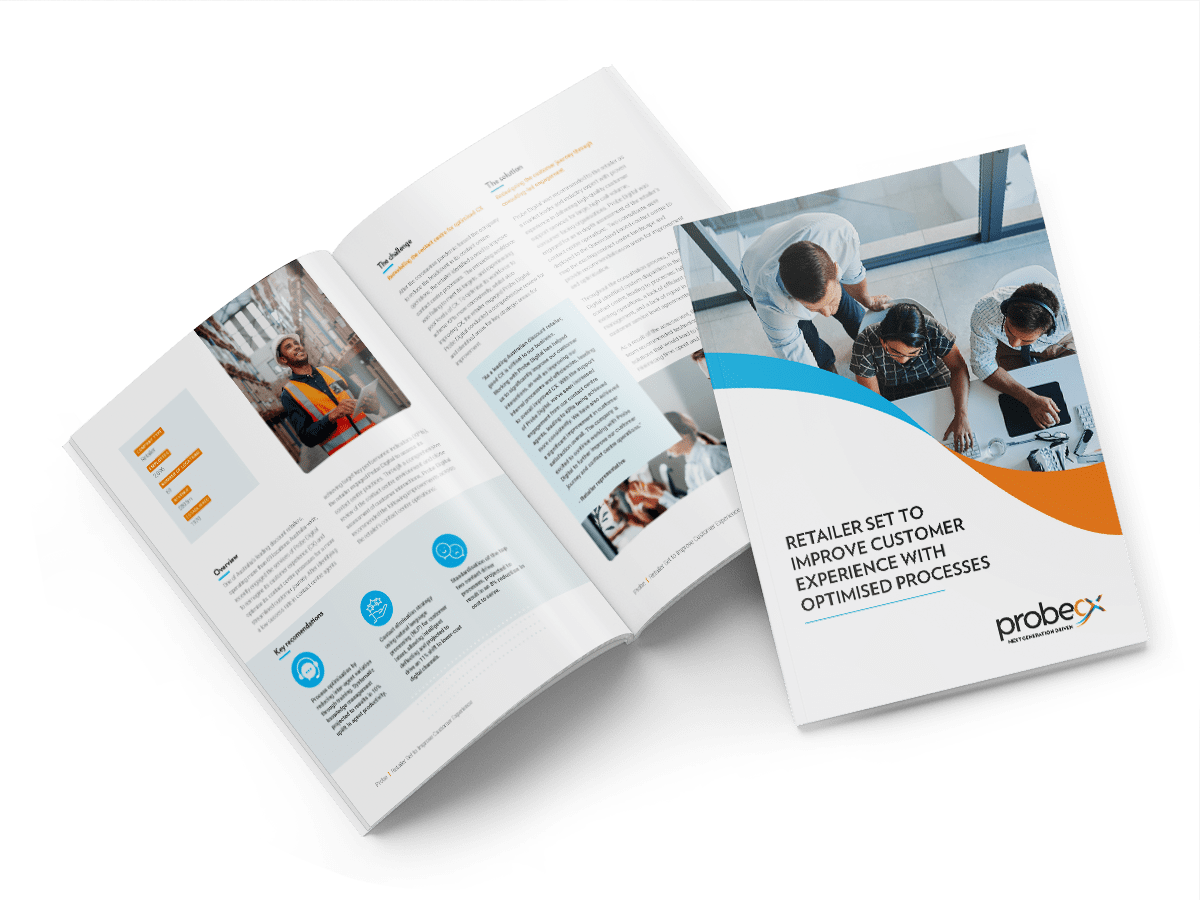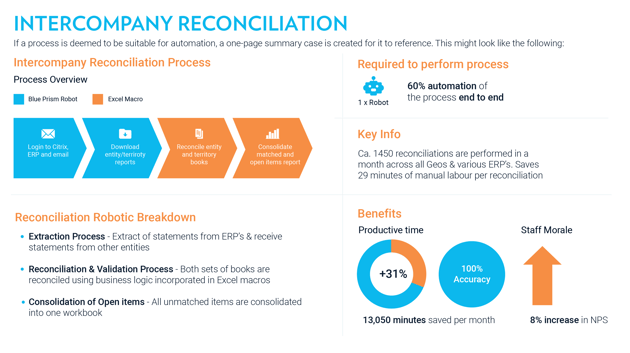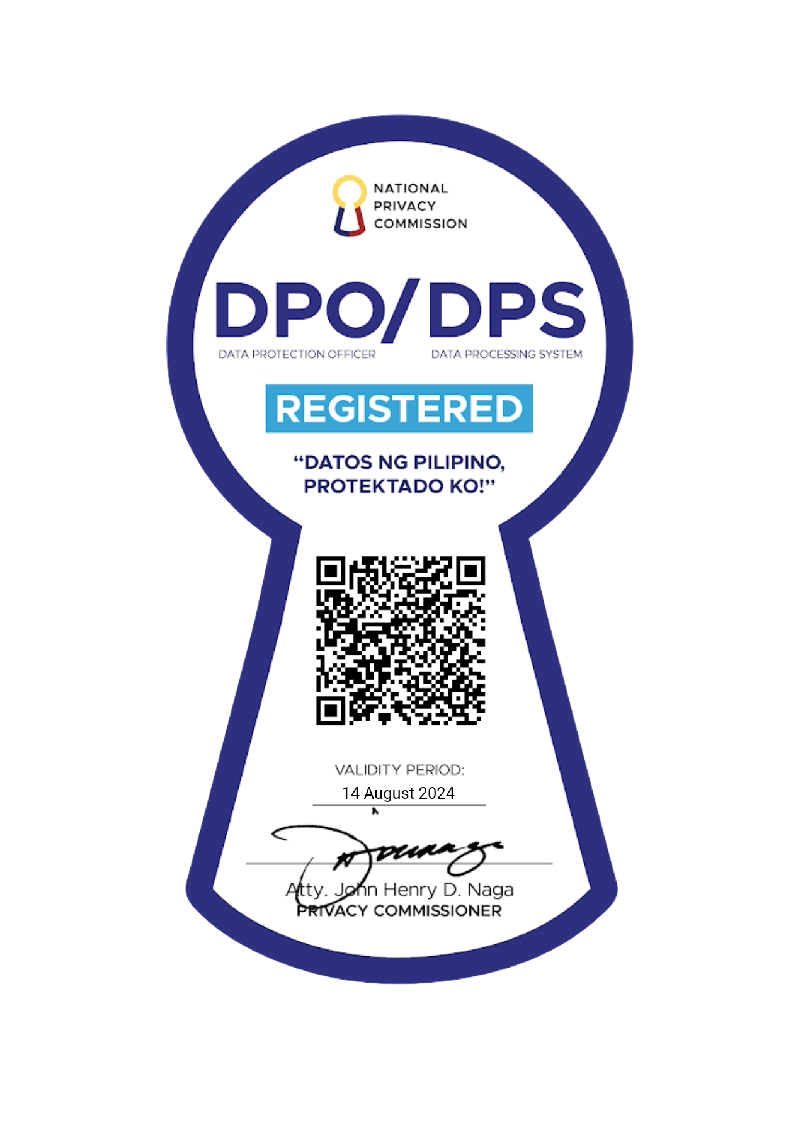-
About Us
Probe CX is a tech-powered, global customer experience organisation that amplifies human capabilities with technological excellence.
-
Vision and Culture
We help our clients become modern digital organisations by combining the latest technology with people, process and data.
-
Executive Team
Meet the team with unmatched experience committed to helping organisations create environments for digitally-enabled CX to thrive.
-
Compliance
Industry-recognised certifications to protect what matters most to our clients and their customers.
-
Locations
Over 19,000 team members delivering exceptional customer experiences across five countries.
-
Reasons to choose Probe CX
The top nine reasons to get more closely acquainted with Probe CX.
TECHNOLOGY & TRANSFORMATION SERVICES
 Creating exceptional customer experiences by 'doing it better'
Creating exceptional customer experiences by 'doing it better'
Optimise your customer experience by designing, deploying and managing digital solutions customised to your unique needs.
Continue reading- Blog
- How to create a quality business case for RPA
How to create a quality business case for RPA

Amid that rush, however, it is essential that leaders take a moment to remind themselves of one key fact – RPA is a business tool that needs to be handled with the same due process as any other corporate strategy. Just as it can be a revelation when done properly, an ad-hoc or misjudged RPA can be a disaster and set related projects back for years. Every successful RPA or intelligent automation journey must start with an iron-clad business case that not only articulates its associated costs and potential benefits but attracts buy-in from senior leaders and wider staff alike.
Creating a quality business case is absolutely crucial when pursuing an RPA tool. It is also one of the most difficult steps in the RPA journey and this handy guide will help you tackle the what, when and how of gaining corporate blessing to turn your automation dreams into reality.
Define Success
In his best-selling book The 7 Habits of Highly Effective People, Dr. Stephen R. Covey famously advised his readers to ‘Begin with the End in Mind’ (Habit No. 2). So it is with building a case for a successful RPA program. Ask yourself what is the greatest contribution the RPA tool could make to your organisation during the next six to 12 months? How could the RPA tool be used to generate new revenue opportunities or make current time-consuming tasks more efficient? Clear KPIs need to be identified and outlined so business leaders can easily judge their potential impact. If it is too difficult to clearly show what success will look like, it is best to not proceed until you can.
Identify Potential Projects
It is not good enough to automate a process simply because it can be done. The key is to ask yourself ‘Should we automate this process?’ and not being able to definitively provide an answer is a sure sign to press pause. RPA should only be implemented when it will deliver tangible business outcomes and that is why people often find the best starting point is a task that involves highly repetitive steps in a larger process that are causing pain. Choosing the wrong pilot process is a routine reason for failed automation projects so better predict their impact via techniques such as process mining or business process analysis.
Study the Numbers
The reasons for implementing RPA may vary – to increase productivity, to reduce errors, to improve compliance – but, at the end of the day, if a project costs more money to implement than it saves it is time to consider other options. A robust business case should clearly articulate to decision-makers the budget required and the financial opportunities it presents. Showing the cost of current business processes will reinforce the immediate need for the RPA investment while highlighting the potential to generate more revenue from improved business outcomes is essential for gaining support. Also, keep in mind that the cost of running RPA will depend on its total cost of ownership (TCO) and its deployment strategy.
Highlight Productivity Gains
RPA can drastically reduce the time it takes for humans to carry out repetitive tasks and the most obvious way to determine ROI is to measure the length of time human workers spend on a task versus how quickly robots complete that same task. It is also important to show when human resources that were used for repetitive tasks can be deployed to execute better-suited tasks such as planning and customer service. Also reinforce that robots are more productive as they work non-stop and can be deployed 24/7, increasing the number of hours available to business.
Consider Complementary Programs
Digital transformation requires more than RPA alone, which is why it is crucial to not get fixated solely on automation. RPA is a single tool that often performs best when combined with other specialist tools and software to create a stronger foundation. The end goal is to improve a process and that is why successful firms should remain open to all possible solutions and sometimes find it may not even be automation. A quality business case should always compare a preferred solution with two or three alternatives to help executives decide where to best spend their money.
Explore Partnerships
RPA experts possess an intimate knowledge of the technology, have extensive experience in implementing such tools and bring solutions to the table that help deliver a positive return on investment. The right partner can be the difference between an RPA success and an automation failure, which is why it is far smarter to pay an expert a small fee to deliver a huge saving than miss out on the benefits of RPA altogether.
Map a Value Benefit Matrix
Being able to map a one-page business case for each and every automation may be difficult but it can be the difference between a green and red light from decision-makers. Executives are often too busy to deep-dive into a 100-page proposal or sit through a two-hour PowerPoint, hence the need to map a one-page, high-level business case that showcases the before and after scenarios and automation benefits. Working with an experienced Business Analyst may be wise given they are often experts at articulating business cases.
 Source: (1) Build a business case for Robotic Process Automation (RPA) and Intelligent Automation (IA) | LinkedIn
Source: (1) Build a business case for Robotic Process Automation (RPA) and Intelligent Automation (IA) | LinkedIn
Be Honest
Make no mistake – RPA platforms are not cheap to buy, build and maintain. In the excitement of their potential impact, it is tempting to gloss over some of the associated costs (eg: robot licences, consultancy support, maintenance) but determining the ‘true’ cost of your RPA platform is essential for its longevity – not to mention your ongoing reputation. Highlighting both best and worst-case scenarios in a business case will allow expectations to be managed from the outset and ensure executives can make an honest appraisal of the program’s worth.
Seal the Deal
You have done your research and crunched the numbers. You have presented a watertight business case. Now it’s a case of seeking funding and executive sponsorship for your RPA program. Smart organisations know that outlaying cash for RPA tools today is an investment in tomorrow and by crafting a business case based on transparency and financial responsibility you are giving yourself the best chance of automation success.
One More Thing
Many organisations underestimate the cost of developing and maintaining new technologies, along with overestimating expected benefits. That is why it is a great idea to regularly revisit an RPA’s original business case to review and update key facts, numbers and variables to ensure its long-term sanctity.
Pinpointing what processes should be automated to drive the best outcomes is no easy task. Discover a few of the key factors in helping decide if a manual task is a quality candidate for RPA and how it will benefit from digital transformation.
Related Articles
Artificial Intelligence
What are PDD and SDD In RPA?
Do you know what PDDs and SDDs are in RPA? Here’s the difference between the two, as well as how they develop an automated process.
Technology
How to get started with intelligent automation
RPA can create growth opportunities and reduce operational costs but it is not a 'one size fits all' concept. Learn more in this blog here.
Technology
RPA in finance and accounting - a digital transformation
The finance and accounting sector is burdened by repetitive and time-consuming tasks, which is why robotic process automation is ideal...
© Copyright 2024 Probe CX | All Rights Reserved
Privacy Policy | Financial Hardship Policy | Whistleblower Policy | Complaints Procedure | Supplier Code of Conduct | Make a Payment | Client Login





